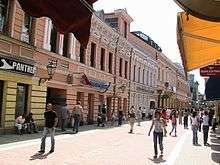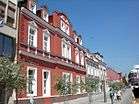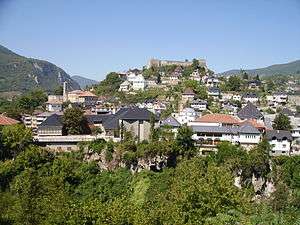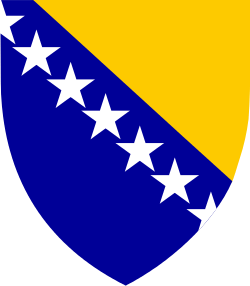Tourism in Bosnia and Herzegovina
| Tourism in Bosnia-Herzegovina | |
|---|---|
|
Kravice waterfalls | |
| Time zone | Central European Time (UTC+1) |
| Area code(s) | +387 |
| Website | Official Tourist webpage |
Tourism in Bosnia and Herzegovina is a fast-growing sector making up an important part in the economy of the country. The tourist business environment is constantly developing with an increasingly active tourism promotional system.
Bosnia and Herzegovina has been a top performer in recent years in terms of tourism development; tourist arrivals have grown by an average of 24% annually from 1995 to 2000. The European region's solid growth in arrivals in 2007 was due in significant part to Southern and Mediterranean Europe’s strong performance (+7%). In particular, Bosnia and Herzegovina were among the stronger players with a growth of 20%.[1] In 2013, the World Economic Forum reported in its Travel and Tourism Competitiveness Report that Bosnia and Herzegovina was the world's eighth friendliest nation towards tourists.[2]
In 2015 Bosnia and Herzegovina surpassed 1 million arrivals and had 1.029.000 tourist arrivals an increase of 21,5% and 2.143.118 overnight stays which is an 25.2% increase from 2014. 58,6% of the tourists came from foreign countries.[3] According to an estimate of the World Tourism Organization, Bosnia and Herzegovina will have the third highest tourism growth rate in the world between 1995 and 2020. The major sending countries in 2012 have been Croatia (15,3%), Serbia (11,9%), Poland (7,3%), Slovenia (6,8%) and Italy (6,5%).[4]
The travel guide series, Lonely Planet, has named Sarajevo as the 43rd best city in the world,[5] and in December 2009 listed Sarajevo as one of the top ten cities to visit in 2010.[6] With its #43 spot Sarajevo has come ahead of Dubrovnik, #59, Ljubljana at #84, Bled at #90, Zagreb at #125 and Belgrade at #143, making Sarajevo the best ranking city on the Balkan peninsula behind Athens, Greece.
Tourism in Sarajevo is chiefly focused on historical, religious, and cultural aspects. In recent years investments has made it a popular shopping city as well, with a respectable offer in retail shopping. It hosted the 1984 Winter Olympics, which, at the time, were the largest Winter Games ever (in terms of athletes and media).
The country is regaining its reputation as an excellent ski destination with its Olympic mountains such as Bjelašnica, Igman and Jahorina.
Economy & Tourism
Tourism is becoming a great contributor the Bosnian economy. As a result, Bosnia-Herzegovina now has a wide tourist industry and a fast expanding service sector thanks to the strong annual growth in tourist arrivals. The country also benefits from being both a summer and winter destination with continuity in its tourism throughout the year.
Being a predominantly mountainous country Bosnia-Herzegovina provides some of the best-value ski vacations in Europe.[7]
In March 2012, Sarajevo won travel blog Foxnomad's "Best City to Visit" competition, beating out more than one hundred cities around the entire world.[8]
More recently, the town of Visoko has experienced a staggering increase in tourist arrivals due to the alleged discovery of the Bosnian pyramids, attracting in excess of 10,000 tourists in the first weekend of June 2006.
Međugorje has become one of the most popular pilgrimage sites for Catholics[9] (and people of other faiths) in the world and has turned into Europe's third most important religious place, where each year more than 1 million people visit.[9] It has been estimated that 30 million pilgrims have come to Međugorje since the reputed apparitions began in 1981.[10]
Neum on the adriatic coast has steep hills, sandy beaches, and several large tourist hotels. Prices tend to be lower than in neighboring Croatia, making it popular with shoppers. Tourism and the commerce it brings, is the leading contributor to the economy of the area. Tourism in Neum is active mostly in the coastal region. The inland area behind Neum has a rich archeological history and untouched wilderness and is starting to develop agricultural tourism.
Vacationing in Bosnia has become popular among Gulf Arabs.[11]
Tourist attractions
.jpg)
The tourist department of Bosnia and Herzegovina indicated that the most attractive benefits experienced by visitors are - 1) the spirit of the people. 2) Cities across the country are well connected with intercity busses and 3) major cities with the surrounding natural sites are easily reachable within a day.[12]
Some of the tourist attractions in Bosnia and Herzegovina include:
- Sarajevo The "Olympic City". Economical, scientific, cultural, political and commercial center of Bosnia-Herzegovina. Called The European Jerusalem.
- Mostar, "City on Neretva", "City of Sunshine", the UNESCO site of Stari most and old town Mostar;
- Višegrad, the UNESCO site of the Mehmed Paša Sokolović Bridge;
- Banja Luka, the "Green City" with various cultural sights like Kastel fortress and Ferhadija mosque (under reconstruction);
- Bihać and the river Una with its waterfalls and the Una River, within Una National Park;
- Jajce city of The Bosnian Kings, foundation of Yugoslavia and its famous waterfalls
- Shrine of Our Lady of Medjugorje, Catholic pilgrimage site of a famous Marian apparition;
- Prijedor, Old City Mosque (National heritage), Kozara National Park and Bosnia's largest WWII monument at Mrakovica;
- Tuzla Birthplace of Mesa Selimovic and famous for its Pannonian "Salt lakes".
- The Neretva river and the Rakitnica river canyons in Upper Neretva;
- The Trebižat river and its waterfalls Kravice and Kočuša;
- The Buna and its spring Vrelo Bune with the historical town of Blagaj;
- The Lower Tara river canyon;
- The Perućica ancient forest, one of the last two remaining primeval forests in Europe, and the Sutjeska river canyon, both within Sutjeska National Park;
- Počitelj historical village;
- Mount Bjelašnica and Jahorina, sites of the XIV Olympic Winter Games;
- Srebrenica beautiful nature, rafting on Drina, boat rides through canyon of river Drina to Višegrad (second deepest canyon in Europe), also a place where some of the worst war crimes committed in war happened;
- Mogorjelo, a Roman villa rustica that dates from the early fourth century. It is situated 5 km south of Čapljina.
- Neum on the coast. City on the Adriatic shore of Bosnia-Herzegovina.
- Doboj and its 13th-century fortress;
- Stolac, the Begovina neighborhood and Radimlja tombstones;
- Visoko, City of Bosnian Kings and site of the alleged Bosnian pyramids;
- Tešanj, one of the oldest cities in Bosnia with its old town;
- Bijeljina, known for its agriculture and Etno village Stanišić.
- Lukavac - Modrac Lake (Jezero Modrac) the largest artificial lake in Bosnia and Herzegovina
- Travnik - The birthplace of Ivo Andrić and site of old town Travnik
- Ostrožac Castle - 16th-century castle built by the Ottomans and a second addition added by the Habsburg family.
UNESCO World heritage sites in Bosnia and Herzegovina
| # | Image | Name of site | UNESCO inscribed |
|---|---|---|---|
| 1 | 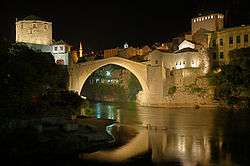 |
Stari Most - Old bridge | 2005 |
| 2 | 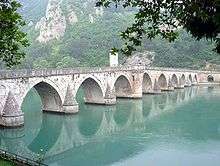 |
Mehmed Paša Sokolović Bridge | 2007 |
| 3 | |
Stećci - Medieval Bosnian tomb stones | 2016 |
Properties submitted on the Tentative List:[7]
- Sarajevo - unique symbol of universal multiculture - continual open city (N.I.) (1997)
- Vjetrenica cave (2004)
- The natural and architectural ensemble of Jajce (2006)
- The historic urban site of Počitelj (2007)
- The natural and architectural ensemble of Blagaj (2007)
- The natural and architectural ensemble of Blidinje (2007)
- The natural and architectural ensemble of Stolac (2007)
- The natural monument Vjetrenica cave with architectural ensemble of village Zavala (2007)
Winter sports


During the 1984 Winter Olympics, the mountains of Bjelašnica, Jahorina and Igman hosted the skiing events. These are the most popular skiing mountains in Bosnia-Herzegovina. Jahorina was the site of the women's alpine skiing events. The men's alpine events were held at Bjelašnica. At Igman The Malo Polije area hosted the ski jumping and the ski jumping part of the Nordic combined events. Meanwhile, the Veliko Polje hosted the biathlon, cross-country skiing, and the cross-country skiing part of the Nordic combined event.[13]
Sarajevo will be hosting the European Youth Olympic Festival in 2017 and due to this čarge investments has been made to build modern ski lift and remarkable good standards of accommodation, especially at Bjelašnica and Jahorina.
The mountain Vlašić has also become a major center for winter tourism due to its excellent accommodation for skiing, snowboarding and other winter sports. It is also a popular destination for summer and eco tourism with many hiking trails and undisturbed wilderness areas.
The mountain and National Park Kozara has over the past years also become a popular tourist attraction for skiing and hiking.
Regions & cities
Bosnia-Herzegovina is known for having various cultural sites of mixed architecture with Roman, medieval, Ottoman and Austro-Hungarian influences.
Sarajevo



The capital city Sarajevo is famous for its traditional religious diversity, with adherents of Islam, Orthodoxy, Catholicism and Judaism coexisting there for centuries.[14] Due to this long and rich history of religious diversity, Sarajevo has often been called the "Jerusalem of Europe"[15]
Sarajevo has a strong tourist industry and was named by Lonely Planet one of the top 50 "Best City in the World" in 2006.[5] Sports-related tourism uses the legacy facilities of the 1984 Winter Olympics, especially the skiing facilities on the nearby mountains of Bjelašnica, Igman, Jahorina, Trebević, and Treskavica. Sarajevo's 600 years of history, influenced by both Western and Eastern empires, is also a strong tourist attraction. Sarajevo has hosted travellers for centuries, because it was an important trading center during the Ottoman and Austria-Hungarian empires. Examples of popular destinations in Sarajevo include the Vrelo Bosne park with Roman thermal springs, the Sarajevo cathedral, the Gazi Husrev-beg's Mosque and old town of Sarajevo; Baščaršija. Tourism in Sarajevo is chiefly focused on historical, religious, and cultural aspects.
The city is rich in museums, including the Museum of Sarajevo, the Ars Aevi Museum of Contemporary Art, Historical Museum of Bosnia and Herzegovina, The Museum of Literature and Theatre Arts of Bosnia and Herzegovina, and the National Museum of Bosnia and Herzegovina (established in 1888) home to the Sarajevo Haggadah,[16] an illuminated manuscript and the oldest Sephardic Jewish document in the world issued in Barcelona around 1350, containing the traditional Jewish Haggadah, is held at the museum.
The city also hosts the National theatre of Bosnia and Herzegovina, established in 1919, as well as the Sarajevo Youth Theatre. Other cultural institutions include the Center for Sarajevo Culture, Sarajevo City Library, Art Gallery of Bosnia and Herzegovina, and the Bosniak Institute, a privately owned library and art collection focusing on Bosniak history.
The Sarajevo Film Festival, established in 1995, has become the premier film festival in the Balkans. The Sarajevo Winter Festival, Sarajevo Jazz Festival and Sarajevo International Music Festival are well-known, as is the Baščaršija Nights festival, a month-long showcase of local culture, music, and dance.
The Sarajevo Film Festival has been hosted at the National Theater, with screenings at the Open-air theater Metalac and the Bosnian Cultural Center, all located in downtown Sarajevo and has hosted such world-renowned actors, directors, and musicians as: Robert De Niro, Steve Buscemi, Bono, Coolio, John Malkovich, Morgan Freeman, Nick Nolte, Daniel Craig, Willem Dafoe, Anthony Minghella, Katrin Cartlidge, Alexander Payne, Sophie Okonedo, Stephen Frears, Michael Moore, Darren Aronofsky, Mickey Rourke, Gillian Anderson, Kevin Spacey, and many other major cultural figures from the Balkans, Europe, and the Americas.
In the past thirteen years, the festival has entertained people and celebrities alike, elevating it to an international level. The first incarnation of the Sarajevo Film Festival was hosted in still-warring Sarajevo in 1995, and has now progressed into being the biggest and most significant festival in South-Eastern Europe. A talent campus is also held during the duration of the festival, with numerous world-renowned lecturers speaking on behalf of world cinematography and holding workshops for film students from across South-Eastern Europe.[17]
The Sarajevo Jazz Festival has been entertaining Jazz connoisseurs for over ten years and has hosted such artists as Richard Bona, The John Butler Trio, Cristina Branco, Dhafer Youssef, and many more. The festival takes place at the Bosnian Cultural Center (aka "Main Stage"), just down the street from the SFF, at the Sarajevo Youth Stage Theater (aka "Strange Fruits Stage"), at the Dom Vojske Federacije (aka "Solo Stage"), and at the CDA (aka "Groove Stage").
• List of shopping malls in Sarajevo
Mostar and Herzegovina



Mostar is an important tourist destination in Bosnia and Herzegovina. Mostar International Airport serves the city as well as the train and bus stations which connect it to a number of national and international destinations. Mostar's old town is an important tourist destination with the Stari Most being its most recognizable feature.
Partisan Memorial Cemetery in Mostar, which is a World War II memorial, is another important city symbol and it was designed by the famous architect Bogdan Bogdanović. Its sacrosanct quality consists in the unity of nature (water and greenery) with the architectural expression of the designer; the monument was included into a list of national monuments in 2006.[18]
The "Rondo shopping centre", "Biosfera Mall", "Orka Mall" and the "Mercator shopping mall" are some of the city's newer attractions. The Catholic pilgrimage site of Međugorje is also nearby as well as the Tekija Dervish Monastery in Blagaj, 13th-century town of Počitelj, Kravice waterfalls, seaside town of Neum, Stolac with its famous Stećak necropolis and the remains of an ancient Greek town of Daorson. Nearby sites also include the nature park called Hutovo Blato, Boračko Lake as well as Vjetrenica cave, the largest and most important cave in Bosnia and Herzegovina.[19]
The historic site of Počitelj is located on the left bank of the river Neretva, on the main Mostar to Metković road, and it is to the south of Mostar. During the Middle Ages, Počitelj was considered the administrative centre and centre of governance of Dubrava župa (county), while its westernmost point gave it major strategic importance. It is believed that the fortified town along with its attendant settlements were built by Bosnia's King Stjepan Tvrtko I in 1383. The walled town of Počitelj evolved in the period from the 16th to the 18th centuries. Architecturally, the stone-constructed parts of the town are a fortified complex, in which two stages of evolution are evident: mediaeval, and Ottoman.[20]
Blagaj is situated at the spring of the Buna river and a historical tekke (tekija or Dervish monastery). The Blagaj Tekija was built around 1520, with elements of Ottoman architecture and Mediterranean style[21][22] and is considered a national monument. The source of the Buna river (Vrelo Bune) is a strong karstic spring. The Buna flows west for approximately 9 kilometres and joins the Neretva near the village Buna. The historic site of the Old Blagaj Fort (Stjepan grad), on the hill above Blagaj, was the seat of Herzegovinian nobleman, Stjepan Vukčić, and the birthplace of Bosnian queen Katarina Kosača-Kotromanić. The architectural ensemble of the Blagaj Tekke (a Sufi monastery) stands by the source of the Buna river, not far from the centre of Blagaj. The musafirhana (guest house) and türbe (mausoleum) are tucked into the natural surroundings, constituting a single entity with the cliffs, source of the Buna river and mills. The musafirhana of the Blagaj tekke and the türbe have been preserved to this day. The musafirhana was built before 1664, and rebuilt in 1851 - its original appearance is not known. The building was subsequently repaired on several occasions. The ensemble of the Blagaj Tekke was presumably built very soon after Ottoman rule was established in Herzegovina, around 1520 at the latest.[21]
Trebinje which was initially a Byzantine territory governed by the Serbs. In the mid 9th century, Knez Vlastimir gave the Župania (city state) of Trebinje (Travunia) to his son-in-law Krajina to govern under his suzerainty. It commanded the road from Ragusa (Dubrovnik) to Constantinople, traversed, in 1096, by Raymond of Toulouse and his crusaders. Under the name of Tribunia or Travunja (the Trebigne of the Ragusans), it belonged to the Serbian Empire until 1355. Trebinje became a part of the expanded Medieval Bosnian state under Tvrtko I in 1373. There is a medieval tower in Gornje Police (Gornye Politse) whose construction is often attributed to Vuk Branković. The old Tvrdoš Monastery dates back to the 15th century. In 1482, together with the rest of Herzegovina and the Bosnian kingdom, it was captured by the Ottoman Empire. The Old Town-Kastel was built by Turks on location of the medieval fortress of Ban Vir, on the western bank of the Trebišnjica River. The city walls, the Old Town square, and two mosques, were built in beginning of the 18th century by Resulbegović family. The Arslanagić bridge was originally built (16th century) at the village of Arslanagić, five kilometres north of the town, by Mehmed-paša Sokolović, and it was managed by Arslanagic family. It was moved closer to Trebinje (1 km) in the late 1960s. The Arslanagić bridge is one of the most attractive Turkish bridges in Bosnia and Herzegovina. It has two large and two small semicircular arches. During the period of Austro-Hungarian administration (1878–1918), several fortifications were built on the surrounding hills, and there was a garrison based in the town. They also modernized the town expanding it westwards, building the present main street, as well as, several squares, park, new schools, tobacco plantations, etc.
Međugorje. Since 1981, it has become a popular site of religious pilgrimage due to reports of apparitions of the Virgin Mary to six local Catholics.[23]
Following reports of apparitions, successive bishops of Mostar ruled the claims groundless. In March 2010, in view of continued public interest, the Holy See announced that the Congregation for the Doctrine of the Faith was forming an investigative commission, composed of bishops, theologians, and other experts, under the leadership of Cardinal Camillo Ruini, the Pope's former Vicar General for the Diocese of Rome.
Bosanska Krajina
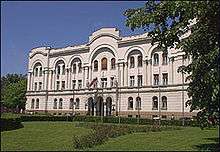

The region of Bosanska Krajina is known for its beautiful rivers and green landscape. The region also includes cultural cities such as Banja Luka, Prijedor, Bihać and Jajce. Old fortresses and castles such as Ostrožac Castle and Velika Kladusa Castle made by the Ottomans and later Astrian-Hungarians are known national heritage sites. The city of The Bosnian kings, the foundation of Yugoslavia and the Jajce waterfalls Jajce is an UNESCO candidate.[24]
Banja Luka lies on the Vrbas river and is well known in the countries of the Former Yugoslavia for being full of tree-lined avenues, boulevards, gardens, and parks. The city is also home to the old fortress Kastel and the Ferhadija Mosque listed as a Bosnia and Herzegovina cultural heritage site in 1950. It was subsequently protected by UNESCO until its destruction in 1993. Today the site is being rebuilt and is listed as a national monument of Bosnia and Herzegovina. Other attractions of Banja Luka are the Banj Hill and a waterfall of the Vrbas river near Krupa. Rafting on the Vrbas river is currently becoming popular among the local tourists. There is fishing, rock climbing and hiking along the canyon of the Vrbas between Banja Luka and Jajce, and there is plenty of accommodation for visitors.[25] Near Banja Luka, famous and prominent Trappist monastery, known as Mariastern Abbey, is located. The church and the monastery contains a large number of works of art and valuable cultural and historical legacy.
Prijedor is located on the river Sana and known for its Catholic, Orthodox Christian and Islamic heritage. Historic buildings from the Ottoman and Austrian-Hungarian periods are a feature of the urban landscape. Most known is the old Ottoman houses in the old city and the old city Mosque from the 15th century. The city underwent extensive renovation between 2006-2009. Within Prijedor municipality is also Kozara National Park that was proclaimed a protected national forest in 1967 by Josip Broz Tito. It is situated between the rivers Una, Sava, Sana and Vrbas, in BiH. These 33.75 square kilometers of dense forest and hilly meadows have earned the nickname 'Green Beauty of Krajina'. Kozara is a popular hunting ground, with a large 180 square kilometers area of the park open to regulated hunting of deer, pheasants, foxes, boars, hares and ducks. A smaller part of the park is designated for nature lovers. Walking, hiking, biking and herb picking are among the many activities in Kozara.
Jajce was first built in the 14th century and served as the capital of the independent Bosnian kingdom during its time. The town has gates as fortifications, as well as a castle with walls which lead to the various gates around the town. Skenderbeg Mihajlović besieged Jajce in 1501, but without success because he was defeated by Ivaniš Korvin assisted by Zrinski, Frankopan, Karlović and Cubor.[26] When the Bosnian kingdom fell to the Ottoman Empire in 1463, Jajce was taken by the Ottomans but was retaken next year by Hungarian King Matthias Corvinus. About 10–20 kilometres from the Jajce lies the Komotin Castle and town area which is older but smaller than Jajce. It is believed the town of Jajce was previously Komotin but was moved after the black death. During this period, Bosnian queen Katarina Kosača-Kotromanić restored the Church of Saint Luke in Jajce, today the oldest church in town. Eventually, in 1527, Jajce became the last Bosnian town to fall to Ottoman rule. There are several churches and mosques built in different times during different rules, making Jajce a rather diverse town in this aspect. The Franciscan monastery of Saint Luke was completed in 1885. Jajce gained prominence during the Second World War because it hosted the second convention of the Anti-Fascist Council of National Liberation of Yugoslavia on November 29, 1943, a meeting that set the foundation for the Socialist Federal Republic of Yugoslavia after WWII.
Bihać was the temporary capital of the Croatian Kingdom. It lost its civic status in the 14th century following dynastic struggles in the kingdom, and became a property of the Frankopan nobles. In the 16th century it passed under direct royal rule, when battles with the Ottoman Empire had begun. The town of Bihać, in the region of the same name, withstood the Ottoman attacks until it fell with the Bosnia sanjak (in 1592). The Bihać fort would become the westernmost fort taken by the Ottoman army over a hundred years later, in 1592 under the Bosnian vizier Hasan-pasha Predojević. The city was initially made the center of the Bihać sanjak, part of the Bosnian pashaluk. It was demoted in 1699 to become part of the sanjak of Bosnia, during the period of intense border wars between the Habsburg monarchy and the Ottoman Empire. In 1865 it became the center of its own sanjak, but this lasted only until 1878, when all of Bosnia was occupied by Austria-Hungary. The city landscape of Bihac with the beautiful Una river has old mosques, catholic churches and splendid nature surroundings.
Adriatic Sea
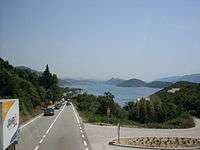
Neum is the only coastal town in Bosnia and Herzegovina. It comprises 24.5 km (15 mi) of coastline and is the country's only access to the Adriatic Sea. Neum has steep hills, sandy beaches, and several large tourist hotels. Prices tend to be lower than in neighboring Croatia, making it popular with shoppers. Tourism and the commerce it brings, is the leading contributor to the economy of the area. Border formalities with Croatia are relaxed at peak times. Neum has over 5,000 beds for tourists, 1,810 in hotels with the remaining capacity in villas and private accommodation. Tourism in Neum is mainly active in the coastal region. The inland area behind Neum has a rich archeological history and untouched wilderness and is starting to develop agricultural tourism.
National parks
National parks of Bosnia and Herzegovina
| Name | Founded in | Area (km²) |
|---|---|---|
| Sutjeska National Park | 1965 | 173 |
| Kozara National Park | 1967 | 34 |
| Una National Park[27] | 2008 | |
Nature parks of Bosnia and Herzegovina
| Name | Founded in | Area (km²) |
|---|---|---|
| Hutovo Blato | 1995 | 74.11 |
| Blidinje | 1995 | 6 |
Nature gallery
 Vrelo Bosne park just outside Sarajevo
Vrelo Bosne park just outside Sarajevo Jajce waterfall
Jajce waterfall_z_Maleho_Vranu.jpg) Blidinje lake
Blidinje lake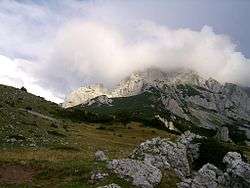 Maglić is the tallest mountain in Bosnia-Herzegovina
Maglić is the tallest mountain in Bosnia-Herzegovina Vranica
Vranica Kanyon Vrbas
Kanyon Vrbas Jablanica lake
Jablanica lake- Neretva river in Mostar
- Drina river
 Skakavac waterfall
Skakavac waterfall- Malovan mountain
 Visočica
Visočica Bjelašnica during winter
Bjelašnica during winter Zelengora
Zelengora Mountain Vlašić
Mountain Vlašić
Adriatic Coast gallery
Cities gallery
Statistics
Number of tourists in Bosnia and Herzegovina [28]
| Year | Total number (domestic and foreign) | Increase | Overnight stays | Increase |
|---|---|---|---|---|
| 2015 | 1.029.000 | 21.5% | 2.143.118 | 25.2% |
| 2014 | 846.581 | 0,3% | 1.711.480 | -6,1% |
| 2013 | 844.189 | 12,9% | 1.822.927 | 10,8% |
| 2012 | 747.827 | 9,0% | 1.645.521 | 9,4% |
| 2011 | 686.148 | 4,5% | 1.504.205 | 6,2% |
| 2010 | 656.333 | 5% | 1.416.691 | 11,7% |
Number of tourists in Sarajevo [29][30]
| Year | Total number | Increase | Overnight stays | Increase |
|---|---|---|---|---|
| 2014[31] | 308.907 | 2,1% | 599.533 | 0,7% |
| 2013 | 302.570 | 17,9% | 595.637 | 18% |
| 2012 | 256.628 | 10,8% | 504.929 | 12,9% |
| 2011 | 231.537 | 10,5% | 447,267 | 13,7% |
| 2010 | 209.525 | 13,9% | 393.494 | 12,4% |
Most visitors arriving to Bosnia and Herzegovina on short term basis in 2015 were from the following countries of nationality:[32]
| Rank | Country | Number |
|---|---|---|
| 1 | 84.058 | |
| 2 | 70.655 | |
| 3 | 66.473 | |
| 4 | 50.346 | |
| 5 | 45.635 | |
| 6 | | 31.681 |
| 7 | 29.973 | |
| 8 | 25.516 | |
| 9 | 18.911 | |
| 10 | 18.361 |
See also
References
- ↑ "Tourism" (PDF). Retrieved 2010-05-30.
- ↑ Blanke, Jennifer; Chiesa, Thea, eds. (2013). "The Travel & Tourism Competitiveness Report 2013" (PDF). World Economic Forum. p. 455.
- ↑ http://www.bhas.ba/saopstenja/2013/TUR_2012M12_001_01-bos.pdf
- ↑ http://www.bhas.ba/saopstenja/2014/TUR_2013%20M%2012_01_bos.pdf
- 1 2 Lonely Planet (March 2006). The Cities Book: A Journey Through The Best Cities In The World, Lonely Planet Publications, ISBN 1-74104-731-5.
- ↑ "Lonely Planet's Top 10 Cities 2010 | Lonely Planet's Top 10 Cities 2010". News.com.au. Retrieved 2010-01-19.
- 1 2
- ↑ Anil Polat (27 March 2012). "The Best City To Visit Travel Tournament 2012: Championship". Foxnomad. Retrieved 30 March 2012.
- 1 2 RomeReports: Visionaries of Medjugorje may appear before the Vatican. Retrieved Feb 26 2011.
- ↑ Vatican Probes Claims of Apparitions at Medugorje Reuters. Retrieved March 17, 2010.
- ↑ http://religionnews.com/2016/08/22/gulf-tourism-frenzy-in-bosnia-polarises-locals/ http://www.menafn.com/1094908836/Kuwaiti-family-buys-flat-in-Sarajevo-to-escape-summer-heat https://www.yahoo.com/movies/gulf-tourism-frenzy-bosnia-delights-business-polarises-locals-095124901--sector.html http://www.albawaba.com/business/therapeutic-tourism-draws-saudi-tourists-eastern-europe-875856 http://www.thenational.ae/news/world/europe/we-have-a-different-kind-of-islam-say-bosnias-muslims http://www.pbs.org/newshour/bb/is-saudi-funded-mosque-in-sarajevo-threat-to-bosnias-moderate-muslims/ http://www.reuters.com/article/bosnia-arabs-investment-idUSL8N1B30NN http://english.alarabiya.net/en/business/economy/2016/08/21/Gulf-tourism-frenzy-in-Bosnia-delights-business-polarizes-locals.html http://the-japan-news.com/news/article/0003166344
- ↑ "Interview with Tourist Department of Bosnia & Herzegovina". Hotel Vikas. 2009-02-28. Retrieved 2009-03-03.
- ↑ 1984 Winter Olympics official report. pp. 18-58, 106-7.
- ↑ Malcolm, Noel. Bosnia: A Short History ISBN 0-8147-5561-5.
- ↑ Stilinovic, Josip (3 January 2002). "In Europe's Jerusalem", Catholic World News. The city’s principal mosques are the Gazi Husreff-Bey’s Mosque, or Begova Džamija (1530), and the Mosque of Ali Pasha (1560–61). Retrieved on 5 August 2006.
- ↑ Sarajevo.net Museum: The Sarajevo Haggadah
- ↑ "Sarajevo Film Festival - Filmski Festivali - Filmski.Net". Filmski.net. Retrieved 2008-11-01.
- ↑ "Commission to preserve national monuments". Retrieved 9 June 2015.
- ↑ Visit Mostar
- ↑ UNESCO World Heritage Centre. "The historic urban site of Počitelj". Retrieved 9 June 2015.
- 1 2 "The natural and architectural ensemble of Blagaj". UNESCO World Heritage Centre. Retrieved 2009-05-21 Tentative List of Bosnia and Herzegovina. Check date values in:
|access-date=(help); External link in|publisher=(help) - ↑ "Tekke in Blagaj on the Buna Spring, the natural and architectural ensemble of Blagaj". Commission to Preserve National Monuments of Bosnia and Herzegovina. Retrieved 2009-05-22 "Tekke in Blagaj on the Buna Spring, the natural and architectural ensemble of Blagaj". Check date values in:
|access-date=(help); External link in|publisher=(help) - ↑ "Overview of Medjugorje". Retrieved 9 June 2015.
- ↑ "BOSNIA NEWS". Retrieved 9 June 2015.
- ↑ "Banja Luka Hotels and Accommodation". Retrieved 9 June 2015.
- ↑ Enciclopedia Croatica (in Croatian) (III ed.). Zagrem: Naklada Hrvatskog Izdavalačkog Bibliografskog Zavoda. 1942. p. 157. Retrieved March 15, 2011.
- ↑ "mediainfo.ba – Federacija BiH: Proglašen nacionalni park "Una"". Retrieved 9 June 2015.
- ↑ "Agencija za statistiku BiH" (PDF). Retrieved 23 February 2016.
- ↑ "U KS-u 2013. je najuspješnija turistička godina od kad se vodi statistika". eKapija.ba. Retrieved 9 June 2015.
- ↑ "STATISTIČKI GODIŠNJACI/LJETOPISI". Retrieved 9 June 2015.
- ↑ "Source.ba - Kanton Sarajevo u 2014. posjetilo 308.907 turista". source.ba. Retrieved 9 June 2015.
- ↑ "Agencija za statistiku BiH" (PDF). Retrieved 23 February 2016.
External links
| Wikivoyage has a travel guide for Bosnia and Herzegovina. |
-
 Media related to Tourism in Bosnia and Herzegovina at Wikimedia Commons
Media related to Tourism in Bosnia and Herzegovina at Wikimedia Commons - BiH promotional site by the Tourism Association of the Federation of Bosnia and Herzegovina
- Bosnia Tourism - Comprehensive Guide
- Banja Luka Travel Guide - android application
- Medjugorje day trip "Medjugorje is a place where Heaven touches the Earth."
.jpg)
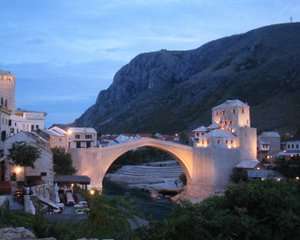






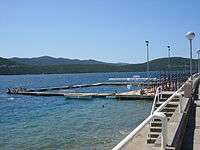

_-_general_view.jpg)

